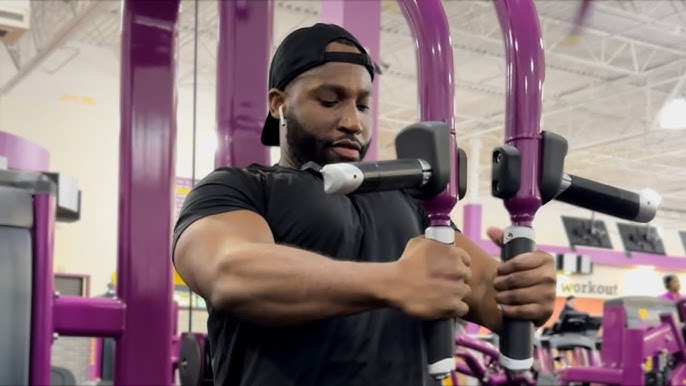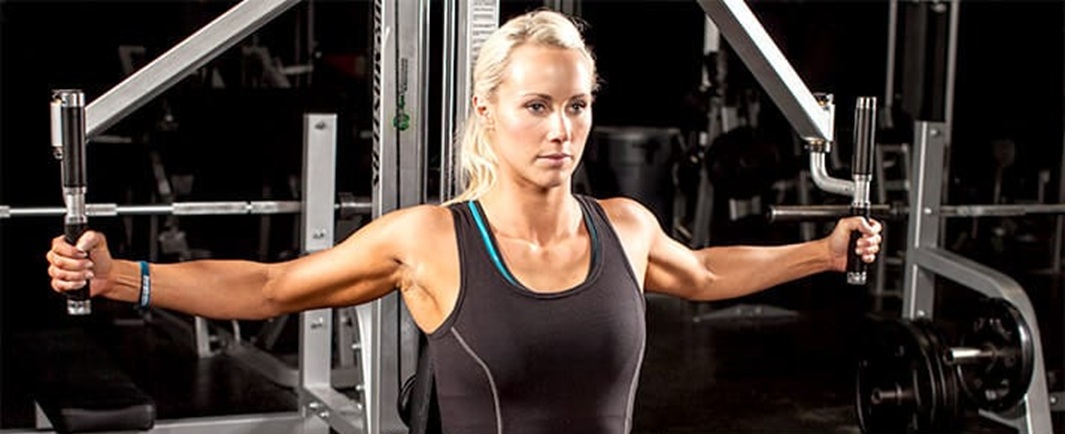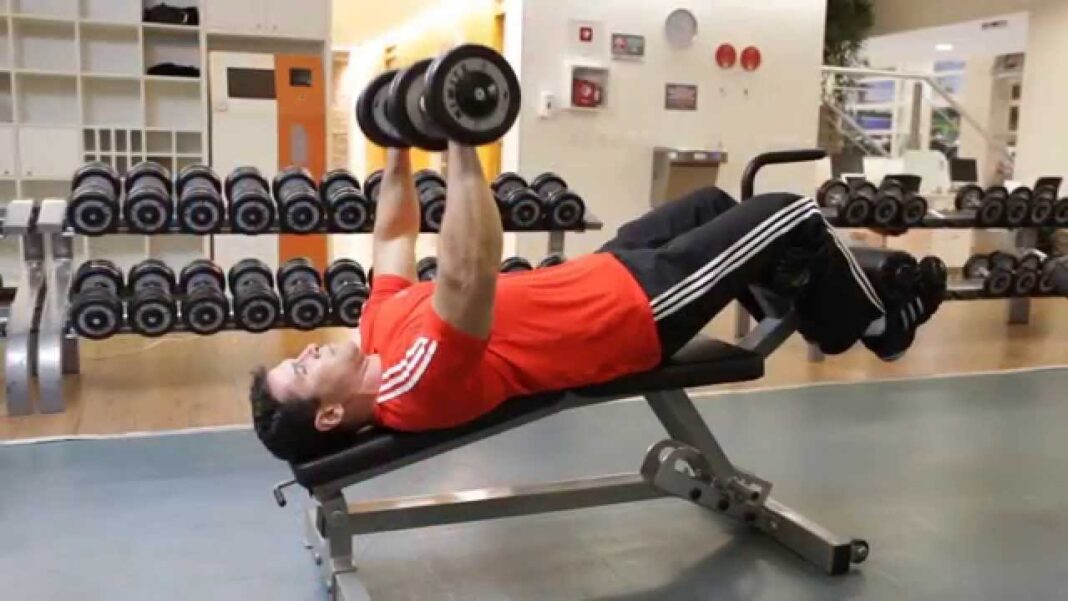Pec Deck Fly: The Ultimate Machine Fly for Chest Isolation, Inner-Pec Density & Maximum Hypertrophy
The Pec Deck Fly — often simply called the “pec deck” or “machine chest fly” — is one of the most effective isolation movements ever created for chest hypertrophy.
It’s a rare exercise where you can place nearly 100% of the tension directly onto the pecs with minimal involvement from the shoulders or triceps.
For bodybuilders, the pec deck is essential. It delivers the stretch of a dumbbell fly without the instability, the contraction of a cable crossover without the setup complexity, and the constant tension of a machine without form breakdown.
If your goal is aesthetics — inner chest detail, fuller pecs, improved shape, or a stronger mind–muscle connection — the pec deck is a movement you cannot skip.
This exercise also works for all training levels:
✔ Beginners (easy to learn)
✔ Intermediates (great for stable hypertrophy training)
✔ Advanced lifters (perfect for pre-exhaust, burnouts, and intensifiers)
Muscles Worked
Primary Muscle
- Pectoralis Major (All Fibers)
Especially the sternal (middle) and costal (lower) fibers.
Secondary Muscles
- Anterior Deltoids (minimal involvement)
- Serratus Anterior (stabilization)
Unlike presses, the pec deck virtually removes triceps involvement, making it one of the purest pec isolators in existence.
Why the Pec Deck Fly Is Essential for Bodybuilders
✔ 1. True Isolation — Maximum Chest Recruitment
Pressing movements involve:
- Shoulders
- Triceps
- Stabilizers
The pec deck removes these, placing tension directly on the chest.
This makes it ideal for:
- Weak chest genetics
- Lagging inner chest
- Learning chest activation
- Pre-exhaust supersets
✔ 2. Huge Stretch + Hard Contraction
The pec deck delivers:
- A deep, controlled stretch at the start
- A powerful inner-chest contraction at the finish
This combination is one of the strongest stimuli for growth.
✔ 3. Constant Tension Through the Entire Rep
Unlike dumbbells, tension doesn’t drop at the top.
Unlike cables, tension doesn’t shift linearly.
Unlike bands, tension doesn’t vary drastically.
Machine resistance = pure, consistent tension.
✔ 4. Shoulder-Friendly Fly Variation
Dumbbell flyes can stress:
- the rotator cuff
- anterior shoulder capsule
- biceps tendon
The pec deck fixes the shoulder position, removing instability and making flyes safer.
✔ 5. Perfect for Volume, Pumps & Finishing Work
Because the technique is stable and safe, you can push high-rep sets without sacrificing form or risking injury.
Some of the best pumps of your life will come from the pec deck.
How to Set Up the Pec Deck Fly Properly
- Adjust the Seat Height
This determines your pressing angle.
For optimal chest targeting:
- Handles should align horizontally with the mid-chest.
- Forearms should be parallel to the floor.
- Set the Arm Pads/Handles
Depending on your machine, select the start position that provides:
- a deep stretch
- without feeling pain or strain in the shoulders
You should feel your chest stretching — not your joints.
- Sit With Proper Body Position
- Chest high
- Shoulder blades pulled back and down
- Lower back lightly arched
- Hips flat against the seat
- Feet planted
This position locks the chest in place for maximum isolation.
- Grip the Handles or Place Forearms on Pads
Two types of machines exist:
Forearm Pad Machines
- Arms bent at 90°
- Pads rest on the inside of the forearms
- Very stable
- Great for beginners
Handle-Style Machines
- More freedom
- Slightly more stabilization needed
- Better stretch
Both are excellent — use whichever your gym has.
How to Perform the Pec Deck Fly (Step-by-Step)
- Begin with the Chest High and Scapula Retracted
This keeps the tension in the pecs and prevents shoulder compensation.
- Stretch Phase — Controlled Opening
Slowly allow the arms to open until:
- you feel a deep stretch across the chest
- the elbows remain slightly bent
- tension remains under control
Do not let the arms pull past your natural range.
- Peak Stretch — Pause for 1 Second
This enhances hypertrophy by emphasizing the eccentric stretch.
- Squeeze Phase — Bring Arms Together
Move in a hugging motion:
- contract the pecs hard
- visualize closing your chest
- keep the shoulders still
Avoid using momentum.
- Peak Contraction — Hold 1–2 Seconds
This is where the pec deck shines:
- maximum inner-chest activation
- high metabolic stress
- enhanced mind–muscle connection
- Repeat with Controlled Tempo
A smooth, consistent pace keeps tension on the chest throughout.
Key Bodybuilding Technique Cues
✔ “Lead with your chest — not your hands.”
✔ “Think of wrapping your arms around a big tree trunk.”
✔ “Stretch the chest, not the shoulders.”
✔ “Squeeze your pecs inward, not your arms forward.”
✔ “Keep your shoulders pinned down — don’t let them roll.”
✔ “Maintain constant tension: no resting at the top.”
Programming for Strength, Hypertrophy & Aesthetics
Hypertrophy (Best Use of Pec Deck)
- 3–4 sets
- 10–15 reps
- 60–90 sec rest
- Slow tempo, 1–2 sec squeeze
This is the ideal rep range for chest growth on fly movements.
End-Range Hypertrophy (Inner Chest Emphasis)
- 3 sets
- 12–20 reps
- Focus on squeezing
- Keep constant tension
Fantastic for shaping the inner chest.
Pre-Exhaust Method
Perform pec deck BEFORE pressing to remove delts and triceps from the equation.
Example:
- Pec Deck — 12–15 reps
- Bench Press / Chest Press — 6–10 reps
This forces the pecs to work harder during presses.
Finisher
- 2–3 sets to near failure
- 15–30 reps
- Minimal rest
Produces insane pumps and growth-inducing metabolic stress.
Pec Deck Variations
- Single-Arm Pec Deck Fly
- helps correct imbalances
- increases mind–muscle connection
- maintains tension while one arm works
- Neutral-Grip Pec Deck
More inner-chest activation.
Less shoulder strain.
- Partial Reps (Peak Contraction Zone)
From 70–100% of the movement:
- intensifies inner-chest density
- increases metabolic stress
Great as a finisher.
- 1.5 Rep Pec Deck Fly
Rep pattern:
- Full stretch → full squeeze → half rep → full squeeze → repeat
Enhances time under tension.
Advanced Bodybuilding Intensifiers
- Rest–Pause Sets
Perfect on machines:
- Hit 10–12 reps
- Rest 10–15 sec
- Hit 3–5 more
- Repeat once
Insane for hypertrophy.
- Drop Sets
Great for metabolic damage:
- Start heavy
- Drop weight by 20–30%
- Continue without rest
Aim for 2–3 drops.
- Mechanical Drop Set
Progress through angles/positions:
- Standard pec deck
- Slight lean-forward (upper-chest focus)
- Lean-back position (lower-chest focus)
Zero weight change required.
- Iso-Holds
Hold peak contraction for:
- 3–5 seconds
- at the end of each rep or at rep 10
Massive MMC improvement.
Common Mistakes to Avoid
❌ Letting Shoulders Roll Forward
Shifts tension away from chest.
❌ Going Too Heavy
Turns the movement into a press.
❌ Overstretching the Shoulder Capsule
If it hurts your shoulder, reduce the range.
❌ Locking Out or Resting at the Top
Removes tension at the peak.
❌ Bending the elbows too much
Turns it into a weird hybrid press.
Mind–Muscle Connection Tips
- Initiate every rep from the chest, not the arms.
- Think: “bring your pecs together,” not “bring the pads together.”
- Visualize squeezing a foam ball between your pecs.
- Keep your ribs high to maintain pec tension.
The pec deck is one of the best tools for learning how to feel your chest work.
Sample Chest Workouts That Utilize the Pec Deck
Mass-Building Chest Day
- Bench Press — 4×6–10
- Incline Dumbbell Press — 4×8–12
- Pec Deck Fly — 3×10–15
- Dips — 3×8–12
- Cable Fly — 3×12–15
Upper/Inner Chest Focus
- Incline Barbell Press — 4×6–10
- Incline Cable Fly — 3×10–15
- Pec Deck Fly — 3×12–18
- Machine Chest Press — 3×10–12
Pump & Shaping Workout
- Machine Chest Press — 3×12–15
- Low-to-High Cable Fly — 3×12–15
- Pec Deck Fly — 3×15–25
- Push-Ups — 2×Failure
Bodybuilder’s Insight
Ask any pro bodybuilder:
The pec deck is one of the best ways to grow your chest — period.
Why?
- perfect isolation
- easy to overload volume
- incredible stretch
- unmatched contraction
- minimal shoulder involvement
Lifters who want a full, round, aesthetic chest with clear separation rely on the pec deck to polish their physique.
Practical Takeaways
✔ One of the best isolation exercises for chest hypertrophy
✔ Incredible stretch + intense contraction
✔ Perfect for inner-chest shaping and detail
✔ Safe, stable, and beginner-friendly
✔ Ideal for high-volume or finishing work
✔ Works equally well in strength, hypertrophy, or pump phases
✔ Should be in virtually every bodybuilding chest routine





